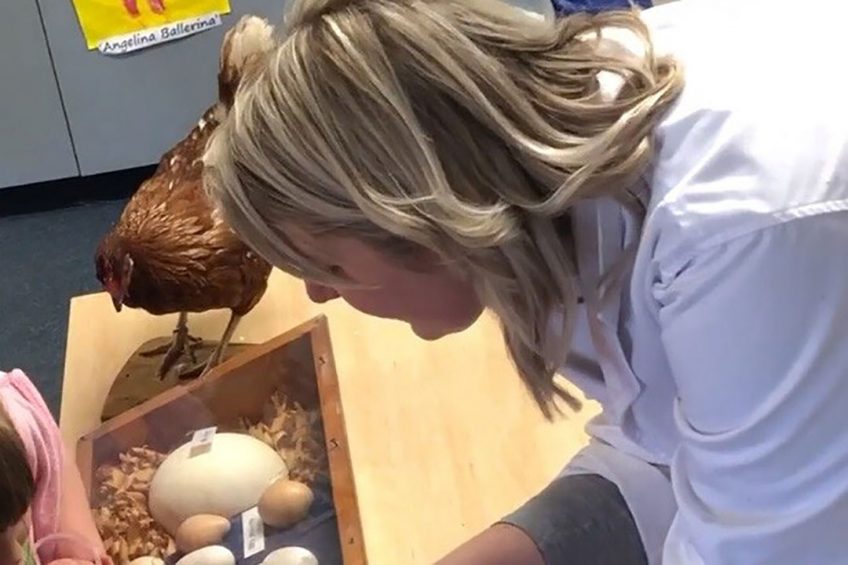Exploring prebiotics to revolutionise gut health in chickens

Poultry nutritionist Dr Natalie Morgan investigates if the use of prebiotics in layer diets can improve chicken production and lower antibiotic use.
University of New England 2021 Science and Innovation Award Winner Dr Natalie Morgan is investigating this concept after winning the Australian Eggs Award in the 2021 Science and Innovation Awards for Young People in Agriculture, Fisheries and Forestry. She is using her AUS$ 22,000 (US$ 16,800) award to fund an 8-week project to examine the effects of adding prebiotics called xylo-oligosaccharides (XOS) to the diets of laying hens. XOS have been studied in broiler chickens, where they significantly improved gut health and production, but have yet to be investigated in layer chickens, she says, noting that layers live longer than broilers and so establish more mature gut microbiomes, suggesting the positive effects of XOS might be amplified.
Long chain sugars reduce nutrient absorption in the gut
Grains fed to commercial poultry contain long-chain sugars that reduce nutrient absorption in the bird’s gut, meaning important nutrients are wasted, or act as a food source for pathogenic gut bacteria. To deal with the problem, all commercial chicken feeds contain an enzyme that breaks up the long-chain sugars into more desirable forms – including XOS. As a prebiotic, XOS fuel beneficial gut bacteria, so Dr Morgan asks what would happen if prebiotic XOS were added directly into the feed, as opposed to relying on the chickens to make it them themselves in their gut.
The 8-week project is expected to begin at the end of April. “A total of 96 birds in individual cages will be used in the study that will be conducted here on the campus. The birds will be fed 12 different dietary treatments with 2 differing xylan levels, 3 different levels of XOS and with or without xylanase,” Dr Morgan told Poultry World.
New antibiotic alternative on Russian poultry farms
By 2025, Russian poultry farms could stop the use of feed antibiotics by including betulin in feed rations. The phytobiotic, which is derived from the bark of birch trees, is widely known for giving the tree its white colour, which appears to protect the tree from mid-winter overheating by the sun.
XOS to boost hen performance
Dr Morgan hopes that her pilot project will show the potential for supplementing feeds with XOS to boost hen feed conversion and productivity, and lower faeces contamination of eggs – and possibly even improve gut health to the point where it affects the chickens’ immunity to disease, lessening dependence on antibiotics. “We are hoping that feeding XOS will cause the hens to have better gut health (identified by measuring short chain fatty acid production, microbiota composition, nutrient digestibility and intestinal enzyme activity), and ultimately better performance (egg quality and bird weights),” she said, adding that if XOS is shown to be an efficacious prebiotic for laying hens, it can potentially be used as alternative to antibiotics through its ability to promote gut health. Because XOS can also be extracted from waste products derived when grains are milled for starch, it is a potentially cheap way to obtain gains in poultry production – an industry where most other avenues for production gains are pushed to their limits.












